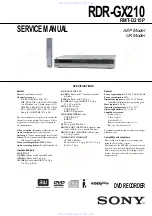
PRELIMINARY ISD1700 SERIES
Publication Release Date: Nov 6, 2008
- 49 -
Revision 1.31
State after Execution
Idle
Registers Affected
SR0, PLAY_PTR
This command enables the PLAY_PTR to jump from current address to the start address of
next message. Unlike the
FWD
in standalone mode, FWD doesn’t interrupt a current
playback operation and can only be issued in the SPI idle state. To emulate a
FWD
during
playback in standalone mode, the STOP command must first be issued, then followed by
FWD and PLAY commands.
To determine the location of the PLAY_PTR, the RD_PLAY_PTR command can be used.
11.2.6 CHK_MEM (0x49) Check Circular Memory
B0 B1 B2 B3 B4 B5 B6 B7 B8 B9 B10 B11 B12 B13 B14 B15
SCLK
MOSI
MISO
SS
Data Byte 1
Command (49h)
LSB
MSB
0
1
2
3
4
5
6
7
8
9
10
11
12
13
14
15
MSB LSB
Status Register 0 : Bytes #1 & #2
CHK_MEM
Opcode 0x49
0x00 Interrupt Yes
Byte Sequence:
MOSI
0x49
0x00
MISO SR0
Description:
Check the validity of circular memory architecture
State before Execution
Idle
State after Execution
Idle
Registers Affected
SR0, PLAY_PTR, REC_PTR
The CHK_MEM command enables the device to check whether the arrangement of the
messages conforms to circular memory architecture under standalone condition. The device
must be powered up and in idle state for this command to operate. When existing memory
structure fails circular memory check, the CMD_ERR of SR0 is set. Upon the successful
completion, the record and playback pointers are initialized, i.e. the playback pointer points to
the last message and the record pointer points to the first available memory row. The read
pointer commands can now be used to determine the positions of both pointers. Also with the
FWD command applied, the start address of the subsequent messages can be located.
















































